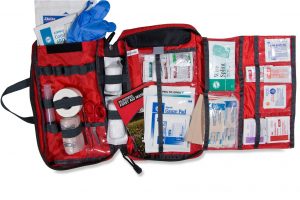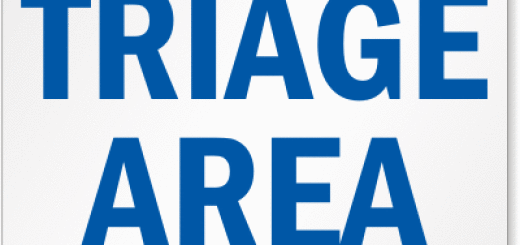What does a well-stocked first aid kit contain?
All homes, cars, workplaces and areas where large numbers of people gather i.e. museums, shopping malls, courthouses etc should have properly stocked first aid kits.
There are legal requirements covering what should be contained in the first aid kits held in the workplace and also those in public buildings. They should be easily accessible, properly labelled and reviewed on a periodic basis to make sure all contents are present and within date if applicable.
It is pointless having a first aid kit that is not checked and replenished on a regular basis as you could find that you don’t have the materials you need should an emergency occur. It is rather obvious but the kit should be stored in a waterproof container in a cool dry place.
The American Red Cross provides first aid kits that meet the requirements of the OSHA guidelines for businesses. You can also buy the appropriate kits for your home and car or you can make one up yourself.
So what does a well-stocked first aid kit contain?
As a basic minimum the first aid kit should contain the following:
- Cleansing wipes – used to clean wounds but also to clean hands when water is not available.
- Adhesive tape – to secure bandages.
- Gauze pads – for dressings and for cleaning around wounds.
- Scissors and Tweezers – blunt edged.
- Blanket – helps to protect against shock or to keep a casualty warm.
- Torch – in case the electricity goes or it is dark outside.
- Whistle – to attract attention if emergency happens outdoors.
- Cotton wool – not to be placed directly over an open wound but as an absorbent layer over the dressing.
- Adhesive dressings in a variety of sizes – there should be a mixture of waterproof and hypoallergenic plasters. These are generally used for small cuts and grazes.
- Sterile dressings – various sizes of a dressing pad attached to a roller bandage. These must be kept in a protective wrapping to ensure the contents remain sterile. These may have a best before date so should be checked on a regular basis. The packaging should also be examined for damage and if damaged should be replaced.
- Sterile eye pads – some firms are required by law to also carry eye washes.
- Roller bandages – these are designed not for dressings but to give support to injured joints, secure dressings or to limit swelling. They can be elasticized or crepe.
- Triangular bandages – these can be sterile or non sterile. The sterile ones will come in individual packaging and can be used on open wounds or burns. The non sterile ones are commonly used as slings.
- Pins and clips for securing bandages.
- Disposable gloves – you should always use gloves when dressing a wound, dealing with bodily fluids or disposing of waste. Ideally there should be a choice of small, medium or large.
If you are stocking a first aid kit for your business you should read the OSHA guidelines as certain occupations are required to carry additional items in their emergency kits. You can also add some painkillers to the contents but the amount and type will depend on local regulations and restrictions.










Very good I didn’t know most of which have been mentioned above. Nice information